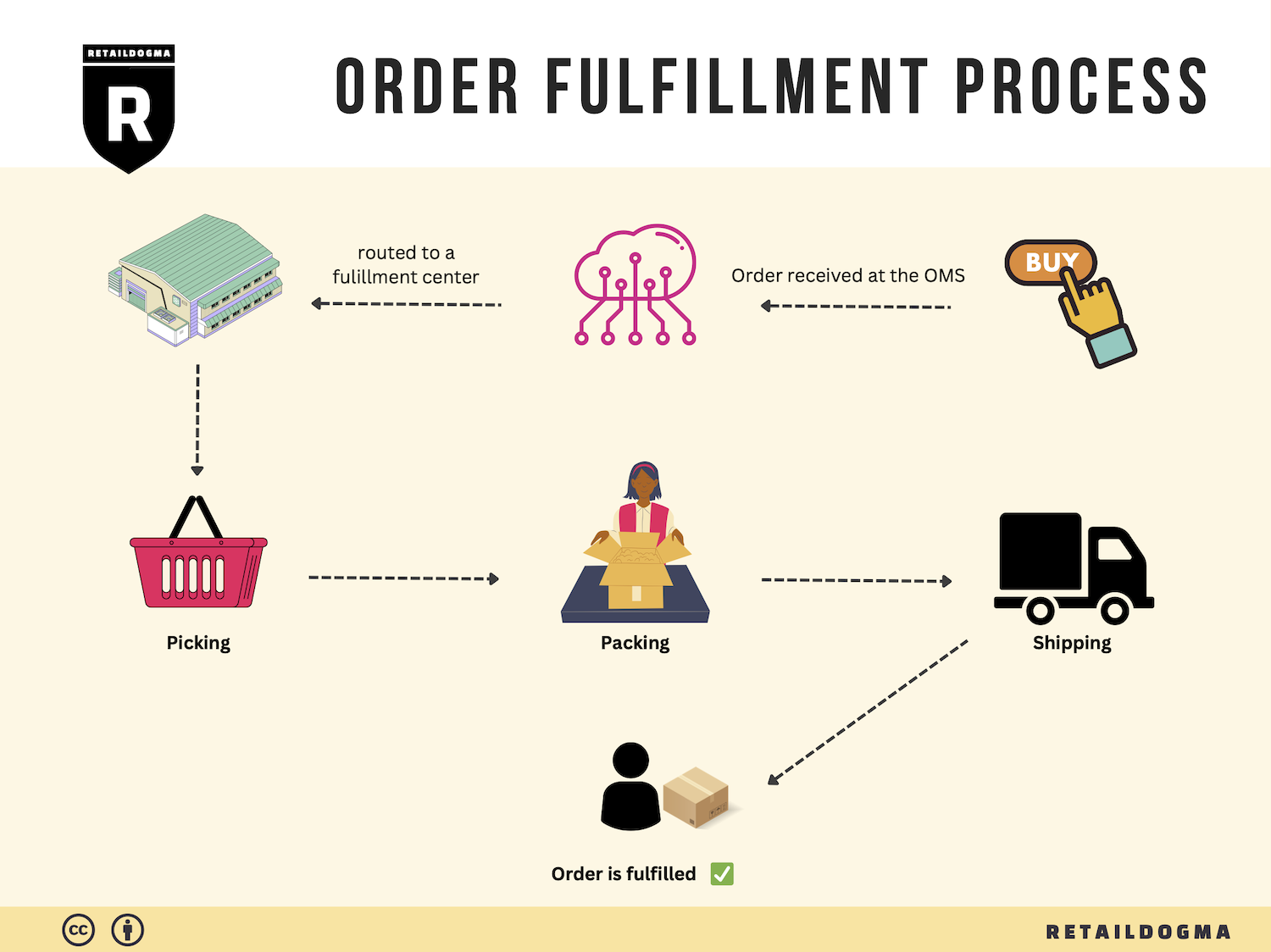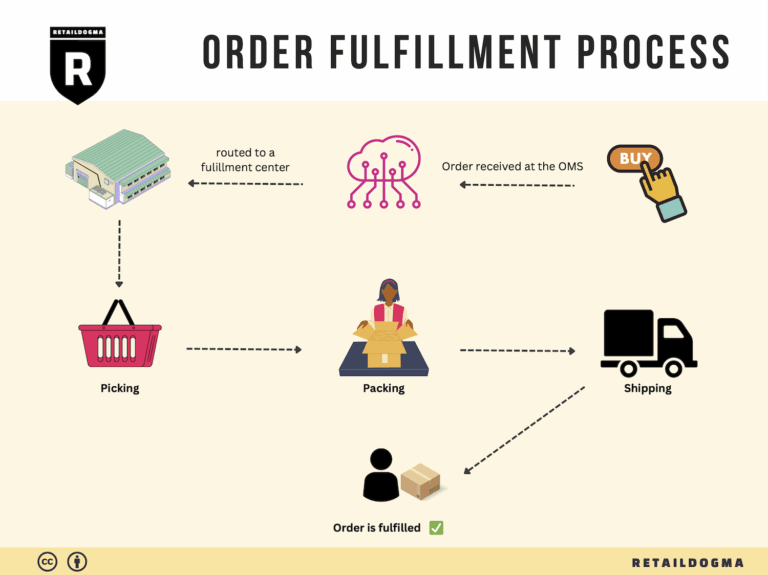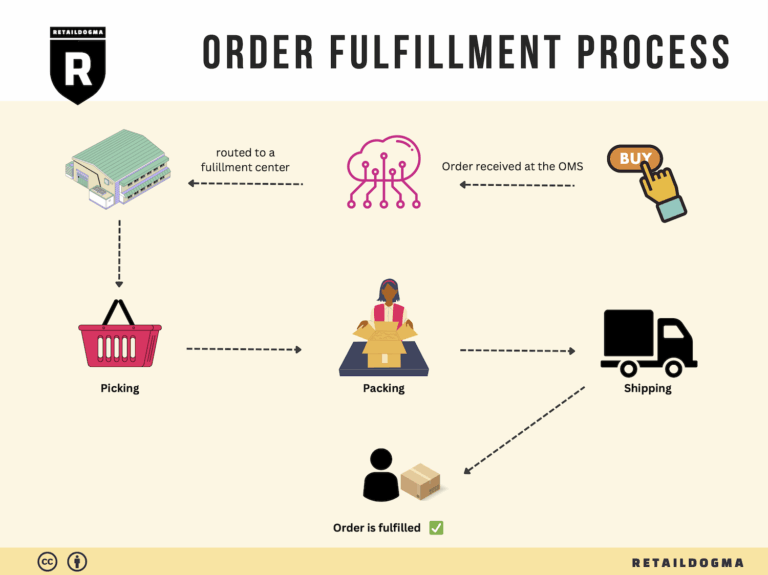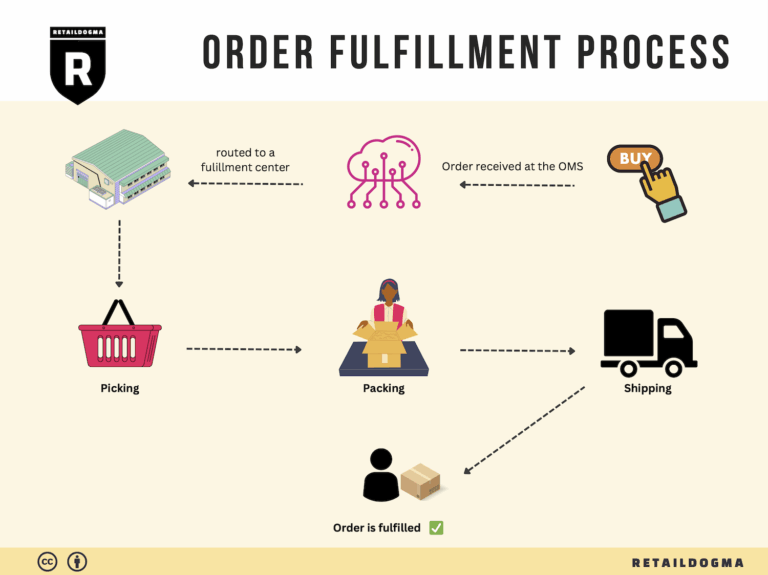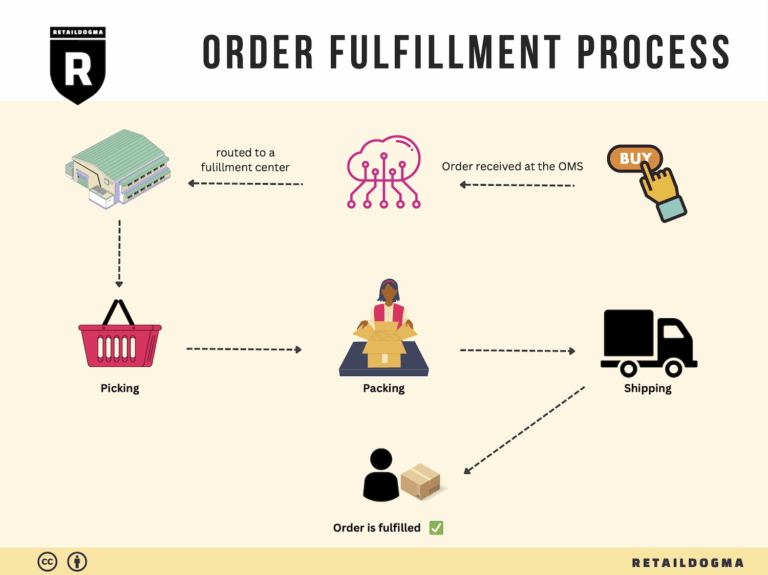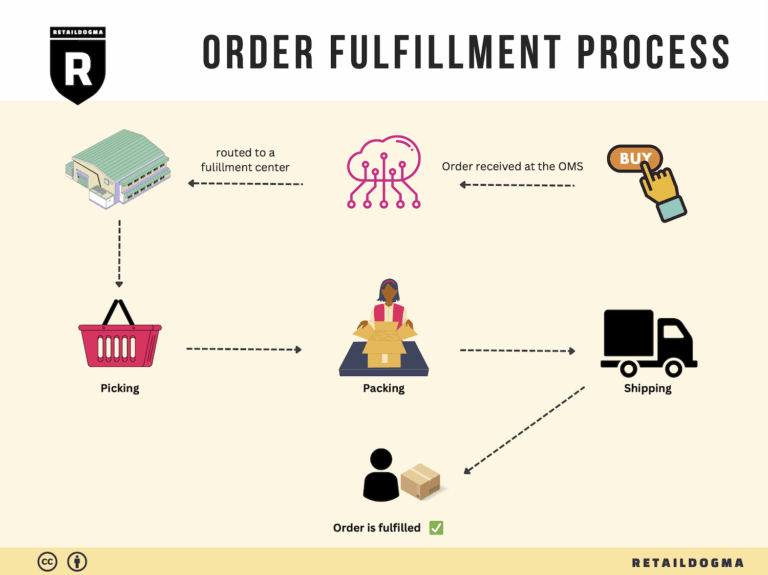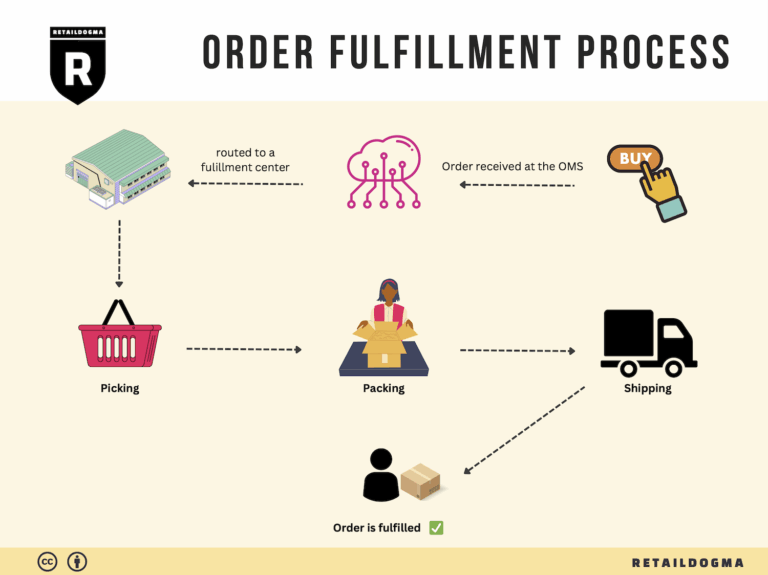What Is A Fulfillment Center? A Complete Guide (2025)
What is E-commerce Fulfillment? An Introduction for Growing Businesses
Understanding E-commerce Fulfillment: A Key to Scaling Your Business
As a growing online business, you may find yourself grappling with the overwhelming tasks of packing and shipping orders. Managing logistics can quickly become a daunting experience, especially as your sales increase and customer expectations rise. This is where e-commerce fulfillment comes into play, providing a structured approach to efficiently deliver your products to customers.
E-commerce fulfillment is simply the process of getting a product from your inventory to the customer’s doorstep. It encompasses everything from receiving inventory and storing it in a warehouse, to picking and packing orders, and finally, shipping them out. As your business scales, understanding the nuances of fulfillment becomes critical not just for operational efficiency, but also for maintaining customer satisfaction.
In this guide, we will explore various fulfillment models that can support your growth. You’ll learn about options like Third-Party Logistics (3PL) and Fulfillment by Amazon (FBA), each offering unique advantages that can align with your business needs. We will delve into the core services involved in fulfillment, such as inventory management, order processing, and returns handling, giving you a comprehensive view of what to expect from potential partners.
Choosing the right fulfillment partner is crucial. We’ll discuss key factors to consider, including location, technology integration, and scalability. A well-chosen partner can not only streamline your logistics but also enhance your overall customer experience.
Additionally, we’ll cover pricing structures you might encounter in the fulfillment landscape. Understanding these costs will empower you to make informed financial decisions, ensuring that your logistics strategy aligns with your budget and growth ambitions.
The goal of this guide is to equip you with the knowledge necessary to make smart, strategic decisions about your logistics. By understanding e-commerce fulfillment and its various components, you can alleviate the stress associated with packing and shipping, allowing you to focus on scaling your business and delighting your customers. With the right approach, fulfillment can become a powerful enabler of growth rather than a source of frustration.
What You’ll Learn In This Guide
- What is E-commerce Fulfillment? An Introduction for Growing Businesses
- The Order Fulfillment Process: From ‘Buy’ Button to Customer’s Door
- Comparing Fulfillment Models: In-House vs. 3PL vs. Dropshipping
- A Deep Dive into Amazon FBA: Pros, Cons, and Who It’s For
- Core Services Offered by Fulfillment Centers
- How to Choose a Fulfillment Partner: A 6-Point Checklist
- Understanding Fulfillment Pricing: A Breakdown of Common Fees
- Frequently Asked Questions (FAQs) about Fulfillment
- Conclusion: Is Outsourcing Fulfillment the Right Move for Your Business?
- Important Disclaimer
The Order Fulfillment Process: From ‘Buy’ Button to Customer’s Door
1. Receiving Inventory
The first step in the order fulfillment process is receiving inventory. This involves accepting goods from suppliers and ensuring they match the purchase orders. Upon arrival at the fulfillment center, items are checked for quality and quantity against the associated documentation. This process often utilizes a key term known as SKU (Stock Keeping Unit), which uniquely identifies each product.
Receiving inventory accurately is crucial as it sets the foundation for the entire fulfillment process. Any discrepancies at this stage can lead to stockouts or overstock situations, affecting customer satisfaction and operational efficiency. Proper inventory management systems can streamline this process by automating data entry and reducing human error. Additionally, maintaining a well-organized receiving area is essential for quick processing and storage of incoming goods.
2. Warehouse Storage
After inventory is received, the next step is warehouse storage. This involves categorizing and placing items in designated storage locations within the fulfillment center. Efficient storage strategies, such as using ABC analysis, can help prioritize space for high-demand items, ensuring they are easily accessible.
Effective warehouse storage is vital for optimizing space and improving retrieval times. If items are stored haphazardly, it can lead to increased picking times and operational delays. Businesses should invest in warehouse management systems (WMS) that facilitate real-time tracking of inventory levels and locations, thus enhancing operational efficiency. Proper labeling and organization also play a significant role in minimizing errors during the picking process.
3. Order Picking
Once an order is placed by a customer, the next phase is order picking. This is the process of retrieving items from their storage locations based on the customer’s order. A common tool used during this stage is the pick list, which details the items and their respective locations within the warehouse.
Order picking is a critical step because it directly influences order accuracy and speed. Errors in picking can lead to wrong shipments, resulting in returns and dissatisfied customers. Implementing strategies like batch picking or zone picking can significantly enhance efficiency. Additionally, utilizing technology such as handheld scanners or mobile picking apps can streamline the process, ensuring that employees can quickly and accurately fulfill orders.
4. Order Packing
After the items are picked, they move to the order packing stage. Here, items are securely packed for shipment, often using materials that protect them during transit. Businesses should adhere to packaging guidelines and consider the use of dimensional weight pricing to optimize shipping costs.
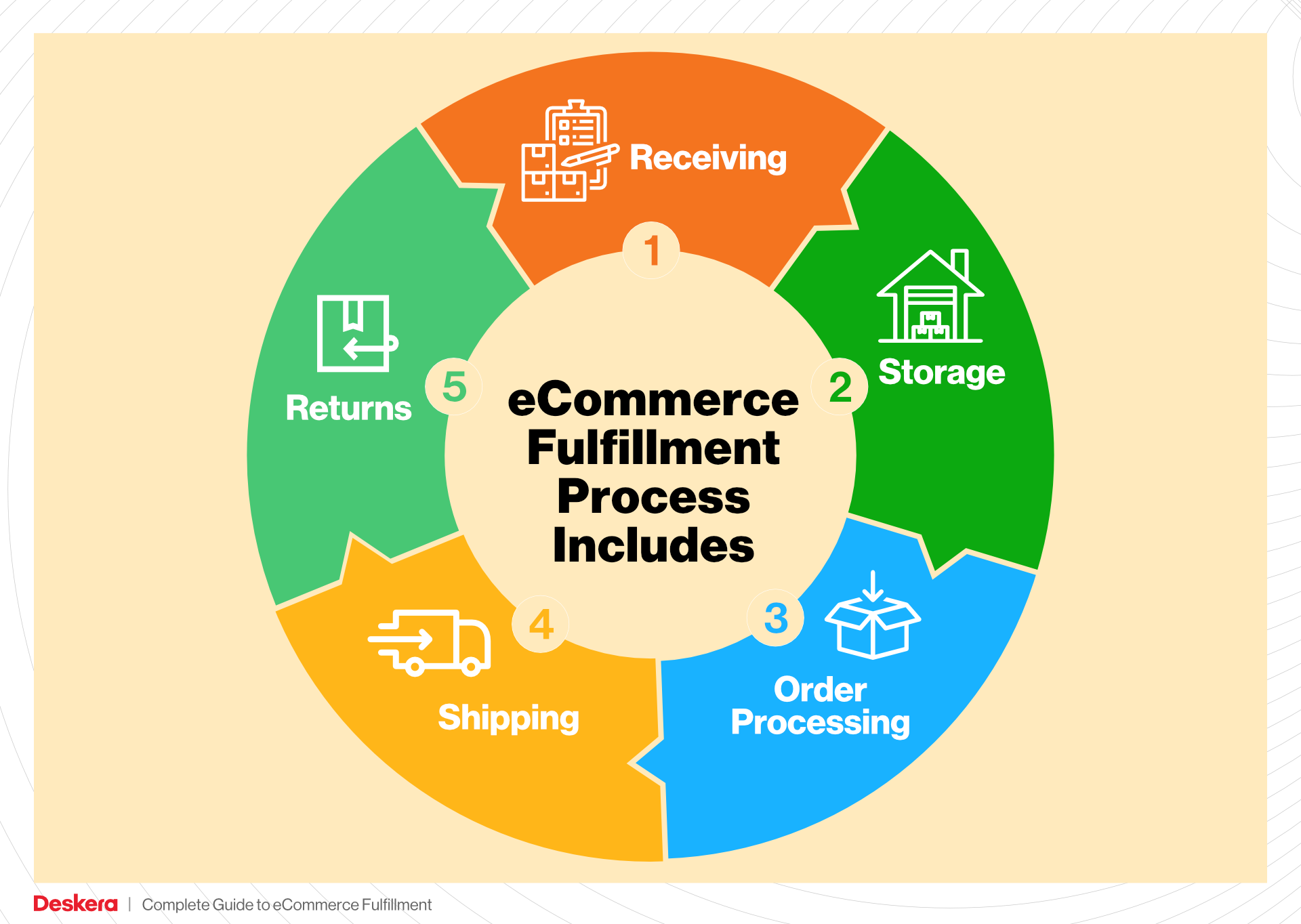
The packing process is crucial for ensuring that products arrive at the customer’s door in perfect condition. Proper packing not only protects items but also enhances the unboxing experience for customers, which can lead to positive reviews and repeat purchases. Companies should also consider sustainable packaging options to meet growing consumer demand for environmentally friendly practices. This step is an opportunity to reinforce brand identity through thoughtful packaging choices.
5. Shipping & Delivery
The final step in the order fulfillment process is shipping and delivery. Once the order is packed, it is labeled and dispatched to the appropriate carrier for delivery to the customer. Key terms associated with this phase include last-mile delivery, which refers to the final leg of the delivery journey from a distribution center to the customer’s location.
Efficient shipping and delivery are essential for customer satisfaction. In today’s fast-paced e-commerce environment, customers expect quick delivery times, often within one to two days. Businesses must strategically partner with reliable carriers and consider using fulfillment networks to enhance their logistics capabilities. Additionally, providing customers with tracking information can improve transparency and increase trust in the brand.
In conclusion, understanding and optimizing each step of the order fulfillment process is vital for e-commerce success. By implementing best practices and leveraging technology at each stage—from receiving inventory to shipping and delivery—businesses can enhance operational efficiency, reduce costs, and improve customer satisfaction.
Comparing Fulfillment Models: In-House vs. 3PL vs. Dropshipping
Fulfillment Model Comparison
| Model | Who Handles Inventory | Best For (Business Stage) | Key Advantage | Key Disadvantage |
|---|---|---|---|---|
| In-House Fulfillment | Business owner/employees | Established businesses | Full control over inventory and processes | High overhead costs and resource demands |
| Third-Party Logistics (3PL) | Third-party provider | Growing businesses | Scalability and expertise in logistics | Less control over inventory and processes |
| Dropshipping | Supplier | Startups or small businesses | Low startup costs and minimal risk | Lower profit margins and reliance on suppliers |
In-House Fulfillment
In-house fulfillment involves managing inventory and shipping operations directly within the business. This model is often adopted by established e-commerce businesses that have the necessary resources and infrastructure to handle logistics internally. One of the primary advantages of in-house fulfillment is the control it offers over the entire process, from inventory management to shipping. Businesses can ensure that their products are stored, picked, packed, and shipped according to their standards, which can enhance customer satisfaction and brand integrity. Furthermore, having direct oversight allows for quicker adjustments to inventory levels and shipping strategies, which can be crucial during peak sales periods.
However, this model comes with significant disadvantages, particularly in terms of cost and resource allocation. Maintaining an in-house fulfillment center requires substantial investments in warehousing, technology, and staffing. These overhead costs can be burdensome, especially for smaller businesses or those experiencing fluctuating sales volumes. Additionally, the demand for skilled personnel to manage logistics effectively can create further challenges, particularly in rapidly changing market conditions.
Third-Party Logistics (3PL)
Third-party logistics (3PL) providers are companies that specialize in managing logistics for other businesses. This model is particularly appealing for growing e-commerce businesses that are scaling their operations but may not have the resources or expertise to handle fulfillment in-house. By partnering with a 3PL, businesses can leverage the provider’s established infrastructure, technology, and logistics expertise, allowing them to focus on core business activities such as marketing and product development.
The key advantage of using a 3PL is scalability. As businesses grow, their logistics needs can change rapidly. 3PLs can easily adjust to increased order volumes and provide additional services such as warehousing, inventory management, and shipping. This flexibility can help businesses manage costs more effectively and respond to market demands without the need for significant upfront investment in logistics infrastructure. However, the downside of working with a 3PL is the potential loss of control over inventory and fulfillment processes. Businesses may face challenges in maintaining their standards for order accuracy and customer service, which can impact their brand reputation if not managed properly.
Dropshipping
Dropshipping is a fulfillment model where the retailer does not keep products in stock but instead transfers customer orders and shipment details to a supplier, who then ships the products directly to the customer. This model is particularly popular among startups and small businesses due to its low entry barriers and minimal risk. By eliminating the need for inventory investment, businesses can offer a wide range of products without the associated overhead costs of warehousing and fulfillment.
The primary advantage of dropshipping is the reduced financial risk. Businesses can test new products and market trends without committing significant resources, allowing for greater agility in responding to customer preferences. Additionally, since fulfillment is handled by suppliers, entrepreneurs can focus their efforts on marketing and customer engagement rather than logistics. However, dropshipping also has notable disadvantages, such as lower profit margins and reliance on suppliers for product quality and shipping speed. Any delays or issues on the supplier’s end can directly impact customer satisfaction, making it critical for businesses to choose reliable partners.
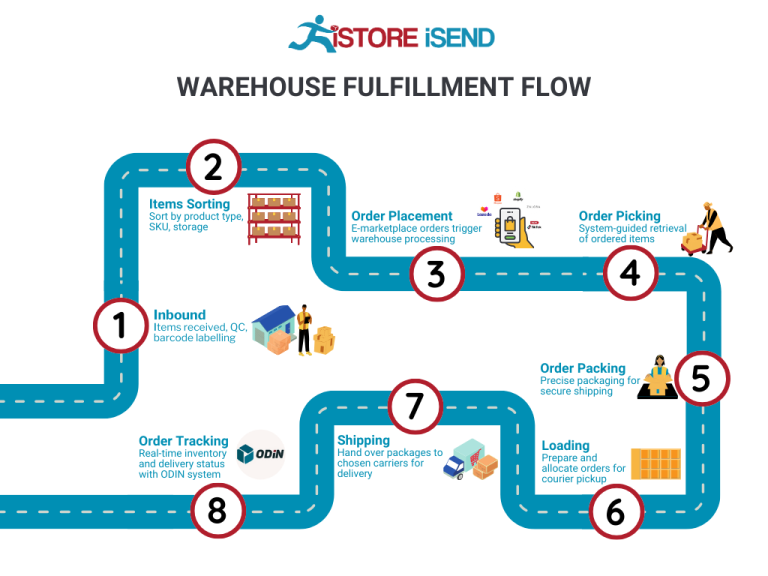
Conclusion
Choosing the right fulfillment model is crucial for e-commerce businesses looking to scale their operations. Each model—In-House, 3PL, and Dropshipping—offers unique advantages and challenges that must be carefully considered in relation to the business’s goals, resources, and market conditions. By understanding these differences, business owners and operations managers can make informed decisions that align with their strategic objectives and customer expectations.
A Deep Dive into Amazon FBA: Pros, Cons, and Who It’s For
Understanding Fulfillment by Amazon (FBA)
Fulfillment by Amazon (FBA) is a service offered by Amazon that enables sellers to store their products in Amazon’s fulfillment centers. Amazon takes care of storage, packaging, and shipping, as well as customer service and returns. This service allows sellers to leverage Amazon’s vast logistics network to fulfill orders, thereby enhancing their reach and efficiency.
When a customer places an order for a product fulfilled by Amazon, the order is processed through Amazon’s system. The product is picked from the fulfillment center, packed, and shipped directly to the customer. The seller benefits from Amazon’s well-established shipping and handling processes, which can lead to faster delivery times and greater customer satisfaction.
How FBA Works
-
Product Listing: Sellers create product listings on Amazon and choose which items they want to fulfill through FBA.
-
Shipping to Amazon: Sellers then ship their products to Amazon’s fulfillment centers. Amazon provides guidelines for shipping and packaging to ensure compliance with their standards.
-
Storage: Once the products arrive at the fulfillment center, they are stored until an order is placed.
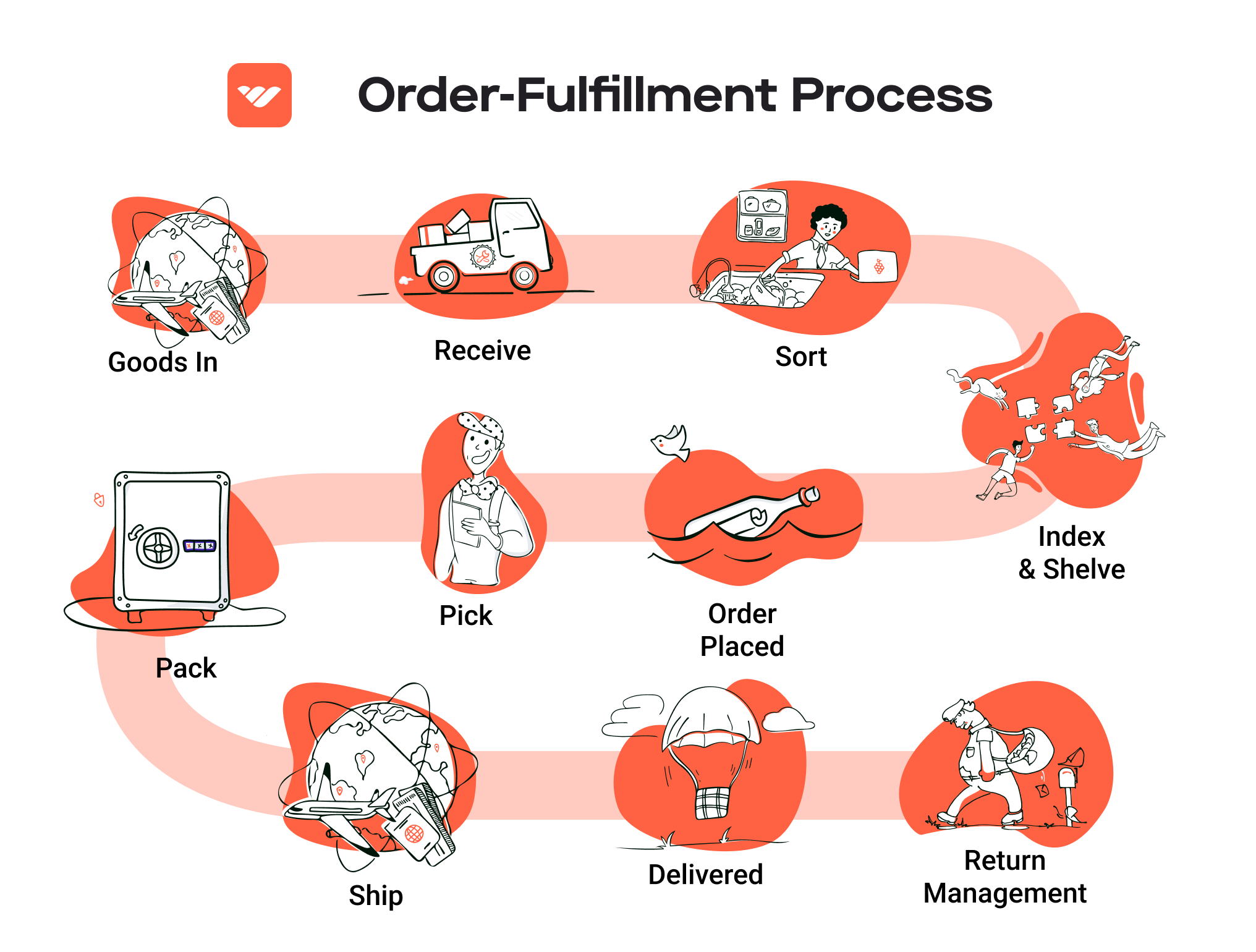
-
Order Fulfillment: When a customer orders a product, Amazon picks, packs, and ships the item. The seller’s product is eligible for Amazon Prime and can be featured in the “Buy Box,” which is a significant advantage.
-
Customer Service: Amazon handles all customer service inquiries and returns for FBA products, allowing sellers to focus on other aspects of their business.
-
Payment: After the sale is completed, sellers receive payment from Amazon, minus the applicable fees for using the FBA service.
Pros of Using FBA
-
Prime Eligibility: Products fulfilled by Amazon are eligible for Amazon Prime, which attracts millions of Prime members who prefer fast and free shipping options. This can significantly increase sales and visibility.
-
Customer Trust: Amazon has built a reputation for reliability and customer service. When sellers use FBA, their products are backed by Amazon’s return policies and customer support, enhancing buyer confidence.
-
Multi-Channel Fulfillment: FBA allows sellers to fulfill orders not only from Amazon but also from other sales channels, such as their own websites or other marketplaces. This flexibility can streamline logistics and improve efficiency.
-
Scalability: FBA is designed to help sellers scale their operations without the need for additional warehousing or logistics management. As sales increase, sellers can easily send more inventory to Amazon.
-
Time Savings: Outsourcing fulfillment to Amazon frees up time for sellers to focus on marketing, product development, and other critical business functions.
Cons of Using FBA
-
High Fees: While FBA can offer significant advantages, the associated fees can be substantial. Sellers must pay for storage, fulfillment, and other service fees, which can cut into profit margins, especially for low-cost items.
-
Strict Inventory Rules: Amazon has stringent policies regarding inventory management, including limitations on the number of units that can be sent to fulfillment centers. Sellers must also manage their stock carefully to avoid long-term storage fees.
-
Commingling Risks: FBA products may be commingled with inventory from other sellers, which can pose risks if a customer receives a defective item. Sellers cannot guarantee that their products will be sent out, which can affect brand reputation.
-
Loss of Control: By outsourcing fulfillment, sellers relinquish some control over the shipping process and customer experience. This can be a concern for brands that prioritize a specific customer experience.
-
Potential for Account Suspension: Sellers must adhere to Amazon’s policies and guidelines. Failure to comply can result in account suspension, leading to lost sales and disruption of business operations.
Who is FBA Best For?
Fulfillment by Amazon is particularly advantageous for:
-
Small to Medium-Sized Sellers: Businesses looking to scale quickly without investing heavily in logistics and warehousing may find FBA a cost-effective solution.
-
New Entrepreneurs: Those just starting out in e-commerce can benefit from the infrastructure and customer trust that Amazon provides, allowing them to focus on growth rather than logistics.
-
Retailers with Seasonal Products: Sellers with fluctuating inventory demands, such as seasonal products, can take advantage of Amazon’s warehousing without committing to long-term storage.
-
Brands Looking to Enhance Visibility: Sellers aiming to increase their product visibility and sales through Amazon Prime can gain significant advantages by utilizing FBA.
-
Multi-Channel Sellers: Businesses that sell on multiple platforms and need a streamlined fulfillment process can leverage FBA to manage logistics across channels effectively.
In conclusion, Fulfillment by Amazon can be a powerful tool for e-commerce sellers looking to enhance their operations and reach a larger audience. However, it is essential to weigh the pros and cons carefully and assess how FBA aligns with your specific business goals and operational capabilities.
Core Services Offered by Fulfillment Centers
Inventory Management & Warehousing
Inventory management and warehousing are foundational services provided by fulfillment centers. This service involves the systematic tracking and organization of stock, ensuring that e-commerce businesses can efficiently manage their products. Fulfillment centers utilize sophisticated inventory management systems that provide real-time data on stock levels, order processing times, and product availability.
The primary benefit of effective inventory management is the reduction of excess inventory and associated costs. By accurately monitoring stock levels, businesses can avoid overstocking, which ties up capital and increases storage costs, as well as understocking, which can lead to lost sales and diminished customer satisfaction. Furthermore, fulfillment centers often offer scalable storage solutions, allowing businesses to adjust their space needs based on seasonal fluctuations or unexpected demand spikes without the burden of long-term leases or facility management. This flexibility is essential for e-commerce businesses aiming to scale effectively while maintaining operational efficiency.
Pick and Pack Services
Pick and pack services are critical for e-commerce operations, as they encompass the process of selecting items from inventory and preparing them for shipment. Fulfillment centers employ advanced technology and trained personnel to execute this process swiftly and accurately. This includes picking items based on customer orders, packing them securely for transit, and labeling shipments for delivery.
The benefit of utilizing pick and pack services lies in the enhanced efficiency and accuracy of order fulfillment. By outsourcing this function to a fulfillment center, e-commerce businesses can reduce the time it takes to process orders, leading to faster shipping times. In today’s competitive market, quick delivery is a significant differentiator, and customers increasingly expect rapid order fulfillment. Additionally, the use of automated systems and experienced staff minimizes errors, leading to higher customer satisfaction and lower return rates. This service allows businesses to focus on other critical areas, such as marketing and product development, while ensuring that customers receive their orders promptly and accurately.
Kitting and Assembly
Kitting and assembly involve bundling individual items into a single package or assembling products before they are shipped. This service is particularly valuable for e-commerce businesses that offer complex products or promotional bundles. Fulfillment centers can pre-assemble items or create kits that combine various products, streamlining the delivery process.
The primary advantage of kitting and assembly is the ability to offer customers unique product combinations that enhance their shopping experience. This service can lead to increased sales by simplifying the purchasing decision for customers, as they can buy a complete package rather than individual components. Furthermore, pre-assembled kits can reduce the time spent on order fulfillment, as the items are already packaged and ready for shipment. This efficiency not only improves operational speed but also allows businesses to manage their inventory more effectively by reducing the number of separate SKUs in their inventory management system.
Returns Management (Reverse Logistics)
Returns management, or reverse logistics, is an essential service provided by fulfillment centers that enables e-commerce businesses to handle product returns efficiently. This process includes receiving returned items, inspecting them, restocking them if they are in sellable condition, or managing their disposal if they are not. Fulfillment centers often have dedicated teams and systems in place to manage returns seamlessly.
The benefits of effective returns management are significant. A well-structured returns process can enhance customer satisfaction and loyalty, as consumers are more likely to purchase from brands that offer hassle-free returns. Additionally, efficient returns management helps businesses recover value from returned items, whether through restocking or refurbishing. This service can also provide valuable data on return reasons, enabling businesses to identify potential quality issues or customer dissatisfaction areas. By leveraging returns management services, e-commerce businesses can reduce operational burdens, improve customer relationships, and ultimately drive profitability.
In summary, fulfillment centers offer a suite of core services that are crucial for the success of e-commerce businesses. By outsourcing inventory management, pick and pack services, kitting and assembly, and returns management, businesses can streamline their operations, enhance customer satisfaction, and position themselves for scalable growth in a competitive marketplace.
How to Choose a Fulfillment Partner: A 6-Point Checklist
Location & Warehouse Network
Importance:
The location of your fulfillment partner’s warehouses plays a crucial role in your shipping efficiency and costs. A well-placed fulfillment center can reduce shipping times and expenses, ultimately enhancing customer satisfaction.
Questions to Ask:
– Where are your fulfillment centers located, and how does that affect shipping times to my target markets?
– Do you have a network of warehouses that allows for regional distribution?
– How do you handle shipping to international customers?
Technology & Integrations
Importance:
In today’s e-commerce landscape, technology is key to operational efficiency. A fulfillment partner should offer robust technology that integrates seamlessly with your e-commerce platforms, enabling real-time inventory management, order tracking, and automated processes.
Questions to Ask:
– What technology do you use for inventory management, order processing, and shipping?
– Can your system integrate with my existing e-commerce platform (e.g., Shopify, WooCommerce, Amazon)?
– Do you provide an API for custom integrations, and what is the setup process like?
Specializations (e.g., cold storage, oversized items)
Importance:
Not all fulfillment partners can handle specialized products. If you deal with perishable goods, oversized items, or unique products, ensure your partner has the necessary facilities and expertise.
Questions to Ask:
– Do you have the capability to handle specialized products like cold storage or oversized items?
– What specific certifications or compliance measures do you have for handling sensitive items?
– How do you manage the storage and shipping of unique product types?
Scalability & Capacity
Importance:
As your business grows, your fulfillment needs will change. A good partner should be able to scale with your business, whether that means accommodating seasonal spikes in orders or expanding your product lines.
Questions to Ask:
– How do you handle increases in order volume, especially during peak seasons?
– What is your capacity for scaling operations, and how quickly can you adjust to my needs?
– Can you provide examples of how you’ve helped other clients scale their operations?
Pricing and Contracts
Importance:
Understanding the pricing structure is essential for budgeting and forecasting. Look for transparency in costs, including hidden fees, and ensure that the contract terms are favorable for your business.
Questions to Ask:
– What is your pricing model (e.g., per order, monthly subscription, etc.)?
– Are there any hidden fees I should be aware of (e.g., storage fees, pick-and-pack fees)?
– Can you explain the contract terms, including the duration and termination clauses?
Customer Support & Reviews
Importance:
Reliable customer support is crucial for resolving issues quickly. Additionally, researching reviews and testimonials can provide insight into the partner’s reputation and reliability.
Questions to Ask:
– What type of customer support do you offer (e.g., 24/7 support, dedicated account manager)?
– How do you handle issues or errors in order fulfillment?
– Can you provide references or case studies from current or past clients?
Conclusion
Choosing the right fulfillment partner is a critical decision that can significantly impact your e-commerce business’s efficiency and customer satisfaction. By following this checklist and asking the right questions, you can make an informed choice that aligns with your operational needs and growth plans. Remember, a fulfilling partnership is not just about logistics; it’s about finding a collaborator who can support your business as it scales and adapts to the ever-changing e-commerce landscape.
Understanding Fulfillment Pricing: A Breakdown of Common Fees
Initial Setup Fees
When partnering with a fulfillment center, many providers charge an initial setup fee. This fee typically covers the costs associated with onboarding your business, which includes integrating your inventory management systems with the fulfillment center’s technology, setting up your account, and configuring your product listings.
The calculation of this fee can vary significantly among providers. Some may charge a flat rate, while others could base it on the complexity of your inventory or the number of products you wish to manage. For instance, if your product catalog is extensive or requires specialized handling, you may incur a higher setup fee. It’s essential to clarify what services are included in this fee to avoid unexpected costs down the line.
Receiving Fees
Receiving fees are charged when your inventory arrives at the fulfillment center. This fee covers the labor involved in unloading, inspecting, and entering your products into the system.
Typically, receiving fees are calculated based on the volume of goods being received, often charged per pallet or per unit. For example, if you send a shipment of 100 units, you might pay a set fee for the first pallet and a lower rate for additional pallets. It’s advisable to review your shipping schedules and consolidate shipments to minimize receiving fees where possible.
Storage Fees (per pallet/bin)
Once your products are in the fulfillment center, storage fees come into play. These fees are charged for holding your inventory until it is sold and shipped out. Storage fees can be calculated on a monthly basis and are often based on the amount of space your products occupy, typically measured in pallets or bins.
Different fulfillment centers may have varying policies; some charge a flat monthly fee per pallet, while others may charge based on the total cubic footage your items occupy. Be mindful that many providers also implement a tiered pricing structure, where the cost per pallet decreases as you store more pallets. Understanding the storage fee structure is crucial, as excess inventory can lead to significant costs.
Pick & Pack Fees (per item/order)
Pick and pack fees are charged for the labor involved in selecting items from storage and preparing them for shipment. This is often one of the most variable components of fulfillment pricing.
These fees can be charged per item picked or per order packed. For example, if a customer places an order for three different items, the fulfillment center may charge you a fee for picking each item plus a fee for packing the entire order. Some centers may offer discounts for larger orders or implement a flat fee for orders containing a certain number of items. To optimize costs, consider streamlining your product offerings or bundling items together to reduce the number of individual picks.
Shipping Fees
Shipping fees are the costs incurred to deliver your products to the customer. These fees can vary based on several factors, including the shipping method selected (standard, expedited, etc.), the destination of the shipment, and the weight and dimensions of the package.
Fulfillment centers often have negotiated rates with shipping carriers, which can benefit your business. It’s important to understand whether the shipping fees are included in your fulfillment contract or if they are billed separately. You may also encounter dimensional weight pricing, where the size of the package affects shipping costs more than its actual weight. To manage shipping costs effectively, analyze your shipping options and consider implementing strategies like offering free shipping thresholds to increase average order values.
Tips for Getting an Accurate Quote
-
Be Transparent About Your Needs: Clearly communicate your inventory volume, order frequency, and specific requirements to potential fulfillment partners. This will help them provide a tailored quote.
-
Request a Breakdown of Fees: Ensure that the quote includes a detailed breakdown of all potential fees. This should encompass initial setup, receiving, storage, pick & pack, and shipping fees.
-
Compare Multiple Providers: Don’t settle for the first quote. Comparing multiple fulfillment centers can give you a better understanding of the market rates and help you negotiate better terms.
-
Consider Long-Term Costs: Look beyond the initial setup fees and consider how each fee type will impact your business over time. A lower initial fee may not compensate for high storage or pick & pack fees.
-
Ask About Discounts: Inquire if the fulfillment center offers discounts for high volumes or long-term contracts. Many providers are open to negotiation, especially if you can commit to a certain volume of business.
By understanding these common fulfillment pricing models and how they are calculated, you can make informed decisions that align with your business goals, ultimately leading to a more efficient and cost-effective fulfillment strategy.
Frequently Asked Questions (FAQs) about Fulfillment
1. What can I expect during an Amazon Fulfillment Center tour at LGA9?
During the tour of the Amazon Fulfillment Center at LGA9, you will gain insights into the logistics and technology that power Amazon’s order fulfillment process. The tour lasts approximately 60-90 minutes and includes walking through various areas of the facility to see how items are sorted, packed, and shipped. You’ll have the opportunity to observe the integration of human effort with robotics in a real-world setting.
2. How do I book a tour at the LGA9 Fulfillment Center?
To book a tour, visit the Amazon Tours website where you can select available dates and times. It is recommended to reserve your spot well in advance, as tours can fill up quickly. Ensure you arrive 15 minutes early to allow for check-in and parking.
3. Are there any age restrictions for participants?
Yes, children must be at least 6 years old to participate in the tour. Minors under 18 must be accompanied by a responsible adult. For groups of minors, there should be at least one adult for every ten children.
4. What is the dress code for the tour?
Participants must wear flat, closed-toed shoes (no sandals or high heels) and long pants for safety reasons. Shirts must have sleeves, and loose-fitting clothing or accessories are not permitted. Visitors will be issued identification badges that must be worn at all times.
5. Is the Fulfillment Center accessible for individuals with disabilities?
Yes, the Amazon Fulfillment Center is designed to be accessible. If you require specific accommodations, it’s advisable to reach out to the Amazon Tours Help Center ahead of your visit to ensure your needs can be met.
6. What items are permitted during the tour?
You are allowed to bring a wallet, keys, and a transparent water bottle. However, cell phones, bags, and backpacks must be left at home or in your vehicle unless medically necessary. Photography is restricted to designated areas only.
7. What’s the difference between a warehouse and a fulfillment center?
A warehouse is primarily a storage space for goods, while a fulfillment center is designed to process orders efficiently, including picking, packing, and shipping products directly to customers. Fulfillment centers are often equipped with advanced technology to streamline these processes.
8. What is a Third-Party Logistics Provider (3PL)?
A Third-Party Logistics Provider (3PL) is a company that offers logistics services to businesses, including transportation, warehousing, and fulfillment. Partnering with a 3PL can help e-commerce businesses scale their operations without the need for extensive infrastructure investment.
9. How much do fulfillment services typically cost?
The cost of fulfillment services can vary widely depending on factors such as order volume, storage space required, and specific services needed (e.g., packaging, shipping). Generally, fulfillment services may charge per order, per item, or based on storage space. It’s essential to evaluate different providers to find a solution that fits your budget and needs.
10. Can I ask questions during the tour?
Absolutely! Tour guides encourage questions to enhance your understanding of the fulfillment process. Engaging with the guides can provide deeper insights into operational efficiencies and the technology used in the facility.
Conclusion: Is Outsourcing Fulfillment the Right Move for Your Business?
Evaluating the Benefits of Outsourcing Fulfillment
As e-commerce continues to evolve, many businesses are exploring the advantages of outsourcing their fulfillment processes. The key benefits of using a fulfillment service are significant and can have a transformative impact on your operations.
Firstly, time savings are crucial. By outsourcing fulfillment, you can focus on core business activities such as marketing, product development, and customer engagement, rather than getting bogged down in logistics. This shift allows for improved productivity and a more strategic approach to growth.
Secondly, scalability is a major advantage. As your business grows, so do your fulfillment needs. Partnering with a fulfillment service provides the infrastructure to handle increased order volumes without the need for significant capital investment. This flexibility can be particularly beneficial during peak seasons or promotional events when demand spikes.
Additionally, outsourcing grants you access to expertise in logistics and supply chain management. Fulfillment centers are equipped with advanced technology and processes that can enhance efficiency and accuracy. This means faster shipping times and improved customer satisfaction, which are critical in today’s competitive e-commerce landscape.
However, it’s vital to choose the right fulfillment partner. Assess their capabilities, technology, and track record to ensure they align with your business goals. A misaligned partnership can lead to setbacks rather than benefits.
Strategic Next Steps
To determine if outsourcing fulfillment is the right move for your business, consider conducting a thorough audit of your current shipping processes. Identify pain points, evaluate costs, and assess your capacity for growth. This analysis will provide clarity on whether a fulfillment partner could streamline your operations and drive your business forward.
In conclusion, embracing a fulfillment service can be a strategic leap toward scalability and efficiency. Take the time to explore your options and find a partner that can support your growth trajectory.
Important Disclaimer
⚠️ Important Disclaimer
The information in this guide is for educational purposes. Fulfillment services, pricing, and platform features change frequently. Always conduct your own due diligence and consult with providers directly before making business decisions.
